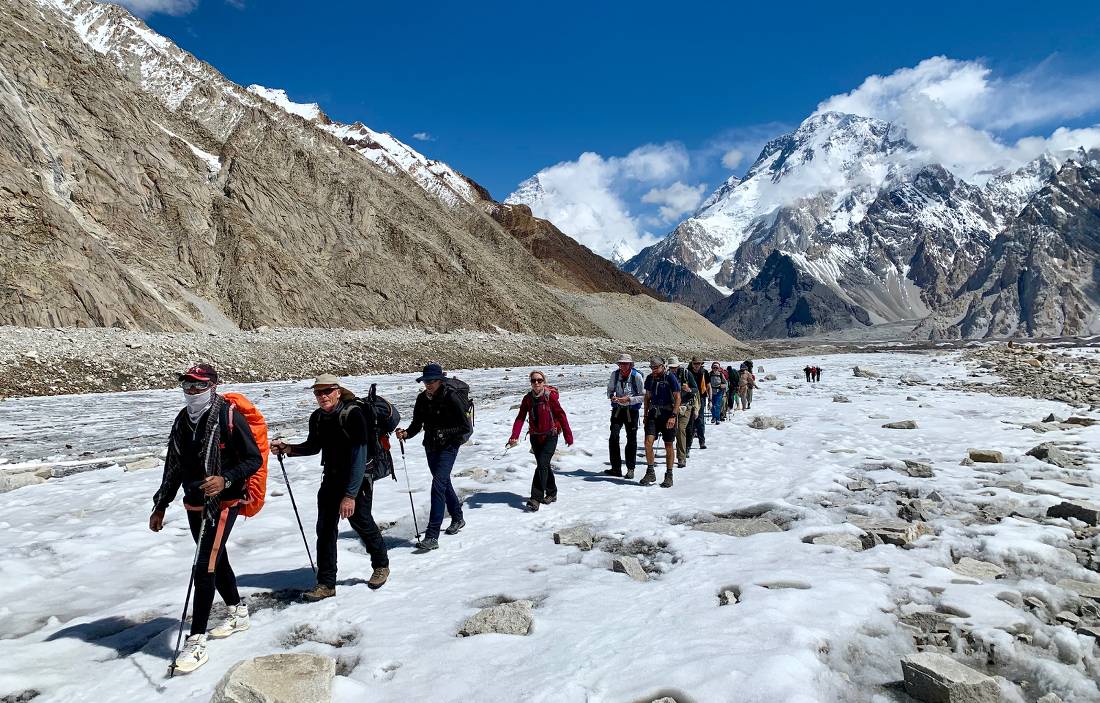Blog home / Travel alerts and advice: explained
Most of us have experienced it. You’ve booked your adventure, you're excited, and you're gearing up to go. You've even started sporting your new hiking shoes to wear them in. Then along comes the words you didn’t want or expect to hear: a travel warning or travel alert has been placed on the destination you’re about to head to.
Is this instantly bad news for you? No, only if it is ‘Do not travel’.
But what exactly do the different travel alerts mean? We explain the four advisory levels as specified by the Australian Department of Foreign Affairs & Trade (DFAT).
Understanding the different DFAT Travel Alerts
The DFAT has four levels of official travel advice based on a variety of indices including local laws which, in many places, can be very different to Australia. This is for the benefit of inexperienced travellers who may not be aware of the customs and acceptable behaviour when entering a different country. It also helps travellers make informed travel decisions when planning their holiday to better understand situations occurring within a destination.
You can view the spectrum similarly to the Bushfire Danger Ratings Australians are accustomed to, which has five levels before it reaches 'Catastrophic'. For those that live in the bush they will understand that the first alerts are really to get your attention and make sure you are prepared, not to immediately evacuate.
Level 1: Exercise normal safety precautions
This is also a key purpose of the Level 1 travel advice – to exercise normal safety precautions, much like you should when at home. As per the DFAT website, this will rely on common sense. Being at the lower precautionary spectrum of the advisory scale, there should be no significant safety and security concerns with risks considered as 'not greater than those you'd face in an Australian city'.
At time of writing, some destinations with a Level 1 advice include Spain, Samoa, Netherlands and Tonga.
Level 2: Exercise a high degree of caution
A Level 2, the warning advice is increased to ‘Exercise a high degree of caution’. This is where you should really be paying attention to what’s happening locally. As per the DFAT website, 'We're not saying 'don't go' to this location. But you should do your research and take extra precautions.'
Destinations with a Level 2 travel advice include Hong Kong, Jamaica, India, France and The Bahamas.
Level 3: Reconsider your need to travel
Level 3 is where it starts to appear much more serious, but it’s still not advice to not travel. The 'Reconsider your need to travel' alert is highlighting that there has been activity or an event that can be deemed as a high risk if you were near it, like natural disasters or civil unrest.
Often, it is applied to the entire country even when vast pockets of the country are free of the stated risk – think of the bushfire season in Australia; it was still fine for tourists to visit the Rock and Reef.
Destinations currently with a Level 3 advice include Pakistan and Egypt, two of our favourite destinations where we have done extensive Risk Management analysis and continue to operate adventures safely.

For peace of mind, we can offer travellers information about our safety record and security arrangements, including safety equipment, emergency plans and evacuation procedures when on tour.
Level 4: Do not travel
Level 4 is where we typically stop operating trips and when travel insurance becomes void for any issues arising due to the risks elaborated in the advisory, where you have chosen to ignore and travel anyway. This is the level of advice you certainly don’t want to hear. In many cases, while the original itinerary cannot be offered, there are always options and you should discuss these with us before deciding to cancel your trip.
World Expeditions has been operating adventures across the globe for 45 years and, during that time, we have experienced and overcome many natural and man-made adversities. We have well-developed and tested risk strategies for these very occurrences, utilising information from reliable sources and local knowledge on the ground.
Your safety and that of all our travellers has always been at the core of everything we do. The rise of misinformation has made making informed decisions tougher than ever before, so we encourage you to get in touch if you want to learn more about how safe it is to travel to a destination you are considering and to do your own research with credible sources.
Published on 11 March 2020.